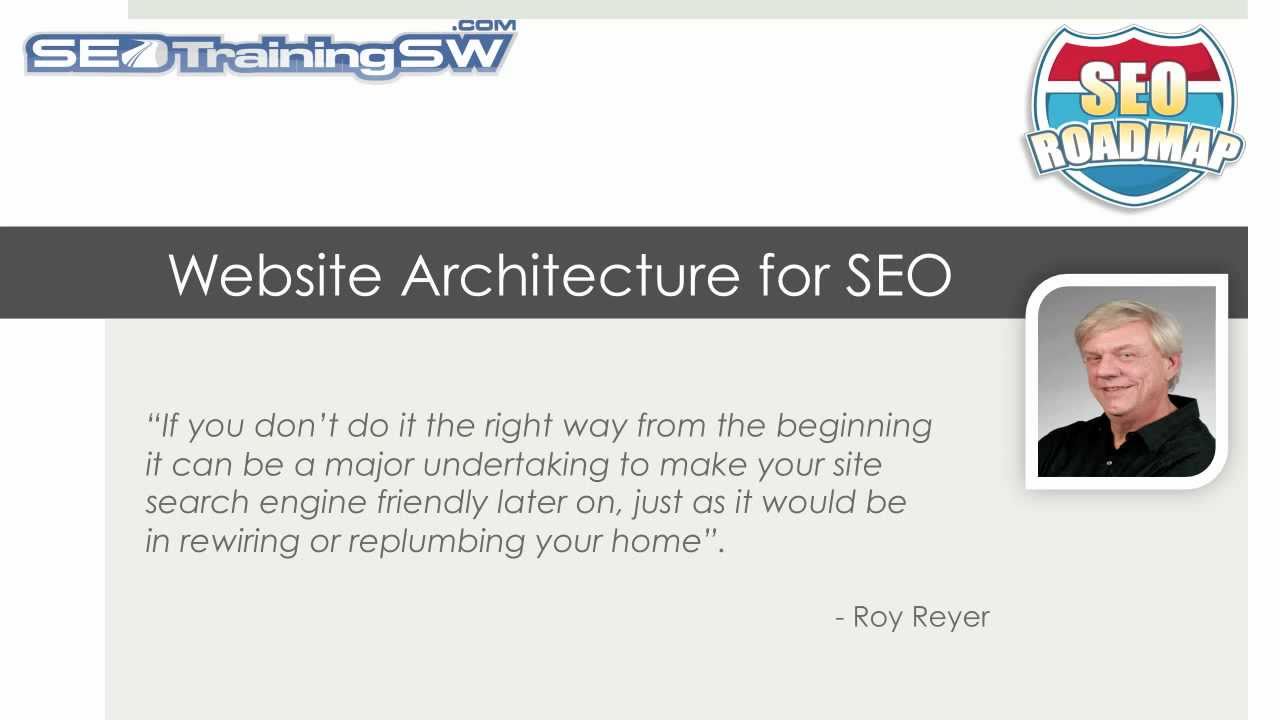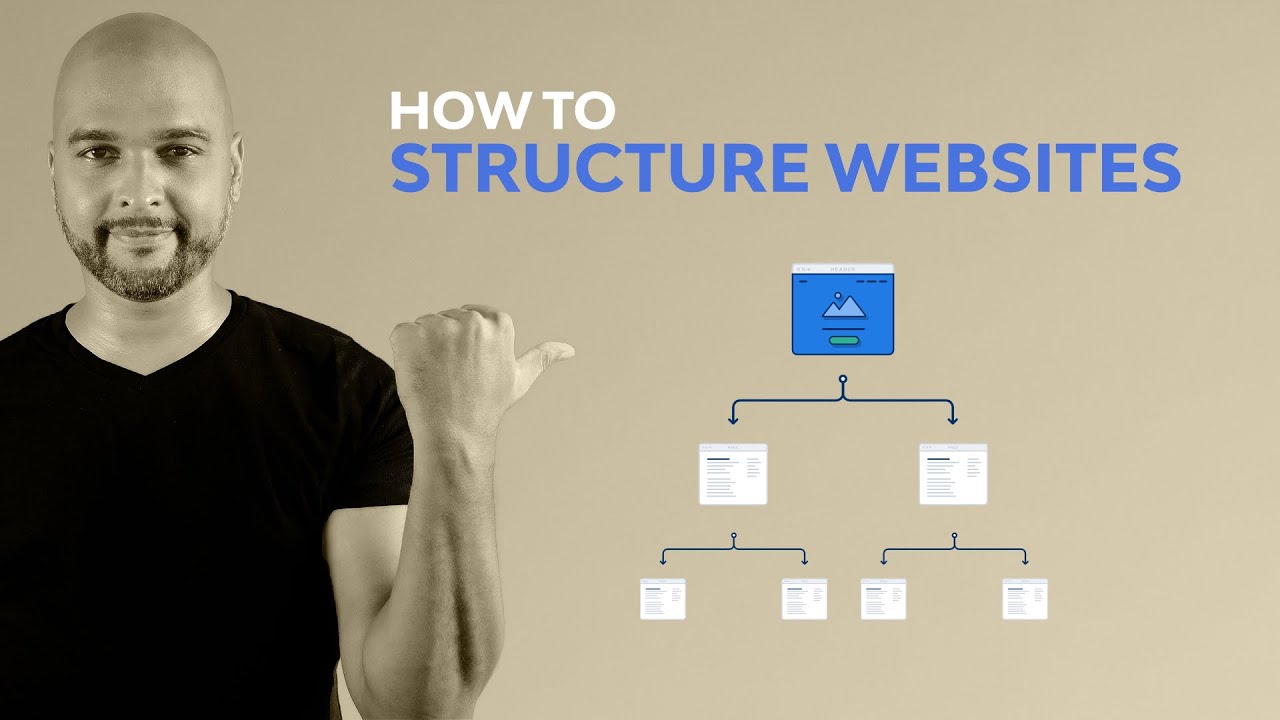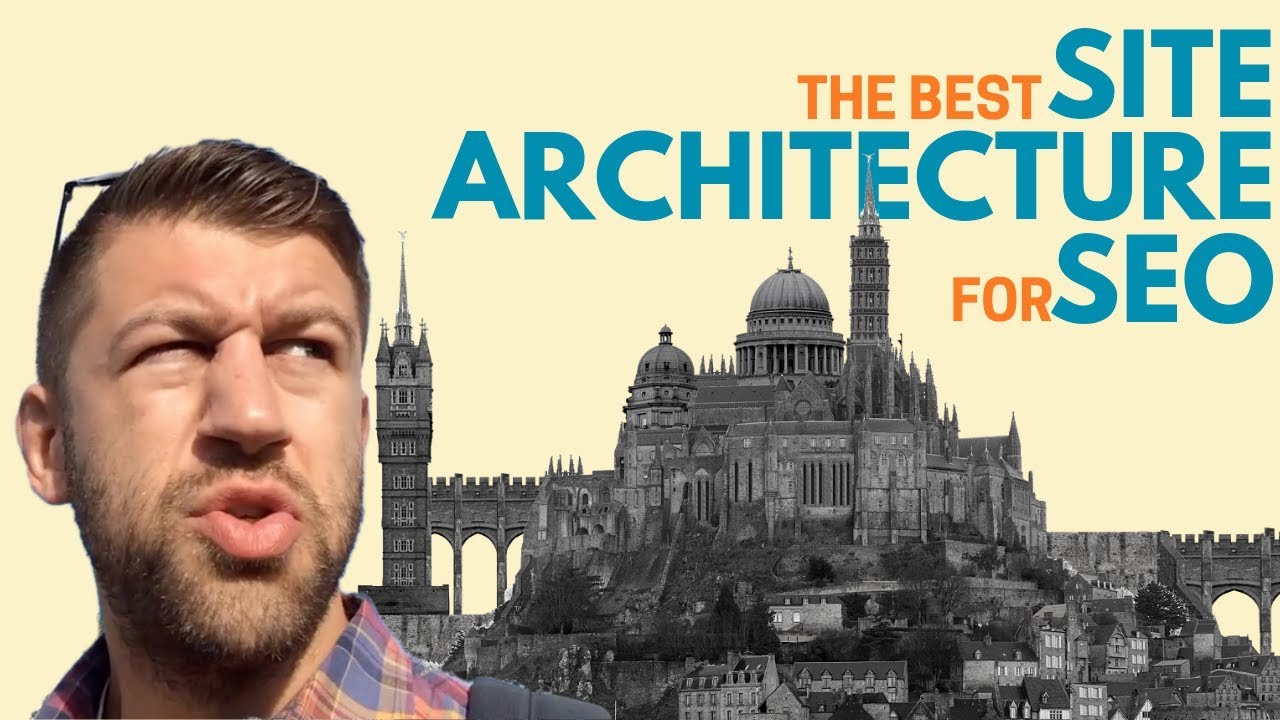Website architectureis a fundamental aspect of search engine optimization(SEO) that often goes overlooked. However, it plays a critical role in determining the visibility and success of your website in search enginerankings.
A well-optimized website architecture not only improves the user experiencebut also helps search engines understand and navigate your site more effectively. In this article, we will explore the importance of website architecture for SEOand provide you with practical tips and best practices to optimize your website's architecture and boost its SEOperformance.
What Is Website Architecture?

Website Architecture for SEO
Website architecture refers to the organization and structure of a website's pages, content, and navigation. It encompasses the way information is categorized, how pages are linked together, and the overall hierarchyand layout of the website. Website architecture plays a crucial role in determining how users and search engines navigate and understand a website.
It involves strategic planning and design to create a user-friendly and logical structure that facilitates easy access to information and enhances the overall user experience. Effective website architecture also helps search engines crawl and index the site more efficiently, leading to better visibility and rankings in search engine results.
Why Is Website Architecture Important For SEO?

The Best Website Architecture For SEO
Website architecture is crucial for SEO for several reasons:
- Crawlability and Indexability -An optimized website architecture ensures that search engine crawlers can easily navigate and access your web pages. When search engines can efficiently crawl and index your site, they can understand its structure and content better, leading to improved visibility in search engine results.
- User Experience (UX) -A well-designed website architecture enhances the user experience by making it easier for visitors to navigate and find relevant information. When users can easily navigate through your site and locate the content they are looking for, they are more likely to stay longer, engage with your content, and potentially convert into customers. Positive user experience signals to search engines that your website provides value, leading to improved rankings.
- Internal Linking and Page Authority -Website architecture influences the internal linking structure of your site. Internal links help search engines understand the relationship between different pages on your website. By strategically interlinking relevant pages, you can distribute page authority and search engine rankings across your site effectively. A well-structured website architecture ensures that each page receives the appropriate amount of internal link juice, boosting its visibility in search results.
- Keyword Relevance and URL Structure -Proper website architecture allows you to optimize your URL structure and include relevant keywords. Clear, concise, and keyword-rich URLs provide valuable signals to search engines about the content on your page. Including target keywords in your URLs can improve your website's chances of ranking higher for those specific keywords.
- Site Speed and Mobile Responsiveness -Website architecture also influences site speed and mobile responsiveness, both of which are important ranking factors. A well-optimized architecture ensures efficient loading times and a responsive design that adapts seamlessly to different devices. Fast-loading websites and mobile-friendly designs contribute to a positive user experience and can positively impact search engine rankings.
Key Components Of Website Architecture

KEY Web Design Principles: Navigation, Hierarchy & Color
The key components of website architecture include:
- Navigation Menus -Navigation menus provide a hierarchical structure that helps users navigate through the website. Well-designed navigation menus make it easy for visitors to find and access different sections or pages of the site.
- URL Structure - The URL structure refers to the format and organization of web page addresses. SEO-friendly URLs are concise, descriptive, and contain relevant keywords. A well-optimized URL structure enhances user experience and provides search engines with valuable information about the content of the page.
- Page Hierarchy and Organization -A clear and logical page hierarchy organizes the website's content into a hierarchical structure. This helps both users and search engines understand the relationship between different pages and categories. It ensures that the most important and relevant pages are easily accessible and prioritized.
- Internal Linking -Internal linking involves linking relevant pages within the same website. It helps search engines discover and crawl different pages, establishes connections between related content, and distributes authority throughout the site. Strategic internal linking enhances website architecture and improves both user experience and search engine visibility.
- Site Speed and Performance -Website architecture also influences site speed and performance. A well-optimized architecture ensures fast-loading pages, efficient server response times, and minimized rendering delays. It involves optimizing code, compressing images, utilizing caching techniques, and reducing unnecessary scripts or plugins.
- Mobile Responsiveness -With the increasing use of mobile devices, having a website that is responsive and mobile-friendly is crucial. Website architecture should consider responsive design principles to ensure that the site adapts seamlessly to different screen sizes and provides an optimal user experience on mobile devices.
Best Practices For Optimizing Website Architecture

How to plan a website structure? (powerful step-by-step!)
Optimizing website architecture is essential for improving SEO performance and user experience. Here are some best practices to follow:
- Plan Your Website Hierarchy -Before building your website, carefully plan and organize its structure in a logical and intuitive manner. Consider the main categories and subcategories of your content and determine the relationships between them. Create a hierarchy that allows users and search engines to easily understand the website's organization.
- Create SEO-Friendly URLs -Craft URLs that are descriptive, short, and contain relevant keywords. Use hyphens to separate words and avoid using numbers or special characters unless necessary. For example, instead of www.example.com/page?id=123, use www.example.com/keyword-rich-description.
- Design User-Friendly Navigation Menus -Implement a navigation menu that provides a clear and straightforward path for users to navigate through your site. Use concise and descriptive labels for each menu item. Avoid complex drop-down menus that may confuse users and search engines. Make sure the navigation menu is consistent across all pages.
- Implement Internal Linking Strategically -Leverage internal linking to guide users and search engines through your website. Link related pages using descriptive anchor text that includes relevant keywords. Distribute internal links evenly across your site, ensuring that each page receives a sufficient number of internal links. This helps search engines understand the structure and content relationships within your website.
- Optimize Site Speed and Performance -Improve the loading speed of your website by optimizing images, minifying code, and utilizing caching techniques. Compress images without compromising quality, minimize CSS and JavaScript files, and enable browser caching to reduce server load and enhance user experience. A faster website not only improves SEO but also reduces bounce rates and improves user engagement.
- Ensure Mobile Responsiveness -With the increasing use of mobile devices, it is crucial to ensure that your website is responsive and displays correctly on various screen sizes. Use responsive design principles to create a seamless and user-friendly experience across desktop, mobile, and tablet devices. Test your website on different devices to ensure its mobile responsiveness.
- XML Sitemap and Robots.txt -Create an XML sitemap to help search engines discover and understand your website's structure. The sitemap should include all your important pages, making it easier for search engines to crawl and index your content. Additionally, use a robots.txt file to instruct search engine crawlers on which parts of your site to crawl and which to exclude.
- Monitor and Analyze Website Performance -Regularly monitor and analyze your website's performance using tools like Google Analyticsand Google Search Console. These tools provide valuable insights into user behavior, search traffic, and website errors. Analyzing this data will help you identify areas for improvement and optimize your website architecture further.
By implementing these best practices, you can create a well-optimized website architecture that enhances SEO performance, improves user experience, and increases the visibility and rankings of your website in search engine results.
Website Architecture And SEO

Creating Website Architecture for SEO (2023)
Website architecture plays a crucial role in search engine optimization (SEO). Here are some ways website architecture impacts SEO:
- Crawlability and Indexability -A well-structured website architecture ensures that search engine crawlers can easily discover, access, and crawl your web pages. When search engines can efficiently crawl and index your site, they can understand its structure and content better, leading to improved visibility in search engine results.
- User Experience (UX) -A well-designed website architecture enhances the user experience by making it easy for visitors to navigate and find relevant information. When users can easily navigate through your site and locate the content they are looking for, they are more likely to stay longer, engage with your content, and potentially convert into customers. Positive user experience signals to search engines that your website provides value, leading to improved rankings.
- Keyword Relevance and Ranking -Proper website architecture allows you to optimize your URL structure and include relevant keywords. Clear, concise, and keyword-rich URLs provide valuable signals to search engines about the content on your page. Including target keywords in your URLs can improve your website's chances of ranking higher for those specific keywords.
- Internal Linking and Page Authority -Website architecture influences the internal linking structure of your site. Internal links help search engines understand the relationship between different pages on your website. By strategically interlinking relevant pages, you can distribute page authority and search engine rankings across your site effectively. A well-structured website architecture ensures that each page receives the appropriate amount of internal link juice, boosting its visibility in search results.
- Site Speed and Mobile Responsiveness -Website architecture also impacts site speed and mobile responsiveness, both of which are important ranking factors. A well-optimized architecture ensures fast-loading pages, efficient server response times, and minimized rendering delays. It involves optimizing code, compressing images, utilizing caching techniques, and reducing unnecessary scripts or plugins. Additionally, with the increasing use of mobile devices, having a website that is responsive and mobile-friendly is crucial for SEO success.
Website architecture and SEO are closely interconnected. By optimizing your website's architecture, you enhance crawlability, improve user experience, increase keyword relevance, boost internal linking and page authority, and optimize site speed and mobile responsiveness. Paying attention to website architecture is essential for improving your website's visibility, rankings, and overall performance in search engine results.
Tools And Resources For Analyzing Website Architecture
Several tools and resources can help you analyze and evaluate the architecture of your website. Here are some commonly used ones:
- Google Analytics -Google Analytics provides valuable insights into user behavior, traffic sources, and engagement metrics. It offers information about how users navigate through your website, which pages they visit, and how long they stay on each page. By analyzing this data, you can identify any issues or patterns in user behavior that may indicate areas for improvement in your website's architecture.
- Google Search Console -Google Search Console offers various tools and reports to monitor the performance of your website in search results. It provides information about indexing status, search queries, crawl errors, and more. By utilizing Search Console, you can identify any crawlability issues, review the search appearance of your website, and ensure that search engines understand and index your website correctly.
- Website Auditing Tools -There are numerous website auditing tools available that analyze various aspects of your website, including architecture. These tools can provide insights into crawlability, URL structure, internal linking, page speed, mobile responsiveness, and more. Examples of popular website auditing tools include SEMrush Site Audit, Moz Pro Site Crawl, and Screaming Frog SEO Spider.
- Heatmap and User Behavior Tools -Heatmap tools, such as Hotjar or Crazy Egg, track user interactions on your website by visually representing where users click, scroll, or spend the most time. This data can help you understand how users interact with different elements on your website and identify any usability issues or areas of improvement within the website architecture.
- Website Architecture Diagramming Tools -Diagramming tools, like Lucidchart or draw.io, can be useful for visualizing and mapping out your website's architecture. These tools allow you to create flowcharts, sitemaps, or diagrams that illustrate the structure, hierarchy, and relationships between different pages and sections of your website. Visualizing the architecture can help you identify any inconsistencies, gaps, or areas for optimization.
Common Website Architecture Mistakes To Avoid

Issues related to Website Structure - Avoid these Website Structure Related Mistakes
While optimizing website architecture is important, it's equally crucial to be aware of common mistakes that can hinder SEO performance and user experience. Here are some common website architecture mistakes to avoid:
- Complex and Confusing Navigation -Having a complex or confusing navigation structure can make it difficult for users and search engines to find and navigate through your website. Avoid overwhelming users with too many menu items or submenus. Aim for a clear and intuitive navigation menu that allows visitors to easily find the information they are looking for.
- Poor URL Structure -URLs that are long, confusing, or lack descriptive keywords can negatively impact SEO. Optimize your URL structure by creating concise, descriptive, and keyword-rich URLs. Avoid using numbers, special characters, or irrelevant parameters in your URLs.
- Orphaned Pages -Orphaned pages are web pages that are not linked to any other page on your website. These pages become inaccessible to users and search engines. Ensure that all important pages are properly linked within your website to enhance crawlability and user navigation.
- Excessive or Irrelevant Internal Links -While internal linking is important, excessive or irrelevant internal links can confuse both users and search engines. Avoid overstuffing your content with unnecessary internal links. Instead, focus on linking relevant and related pages using descriptive anchor text.
- Lack of Mobile Responsiveness -With the increasing use of mobile devices, it's essential to have a mobile-responsive website. Failing to optimize your website for mobile devices can result in a poor user experience and lower search engine rankings. Ensure that your website design is responsive and adjusts seamlessly to different screen sizes.
- Slow Page Load Times -Slow-loading pages frustrate users and can lead to higher bounce rates. Page speed is a critical factor for both user experience and search engine rankings. Optimize your website by compressing images, minimizing code, leveraging caching techniques, and using a fast and reliable hosting provider.
- Inconsistent or Duplicated Content -Inconsistent or duplicated content can confuse search engines and dilute the authority of your website. Ensure that each page has unique and valuable content. Avoid duplicating content across multiple pages or using boilerplate content that provides little value to users.
- Ignoring Analytics and User Feedback -Neglecting to analyze website analytics and user feedback can prevent you from identifying and rectifying architectural issues. Regularly monitor user behavior, engagement metrics, and feedback to gain insights into areas of improvement and make data-driven decisions to enhance your website's architecture.
People Also Ask
How Does Website Architecture Affect SEO?
Website architecture affects SEO by influencing crawlability, indexability, and user experience. A well-structured architecture makes it easier for search engines to crawl and understand the content, leading to better visibility and rankings in search results.
What Is The Importance Of Internal Linking In Website Architecture For SEO?
Internal linking plays a significant role in website architecture for SEO. It helps establish the relationship between pages, distributes page authority, and helps search engines discover and index content more efficiently, improving overall visibility and rankings.
How Can I Optimize My Website's URL Structure For Better SEO?
To optimize your website's URL structure for SEO, focus on creating descriptive, concise, and keyword-rich URLs. Use hyphens to separate words, avoid using numbers or special characters, and make sure the URL reflects the content of the page.
Conclusion
Optimizing your website architecture for SEO is an essential step in improving your website's visibility and attracting organic traffic. A well-structured website that prioritizes user experience, crawlability, and keyword relevance can significantly impact your search engine rankings.
Regular monitoring and analysis of your website's performance will help you identify areas for improvement and ensure that your website continues to meet the evolving needs of search engines and users. Invest time and effort in optimizing your website architecture, and you'll reap the rewards of increased visibility, organic traffic, and higher rankings in search engine results.